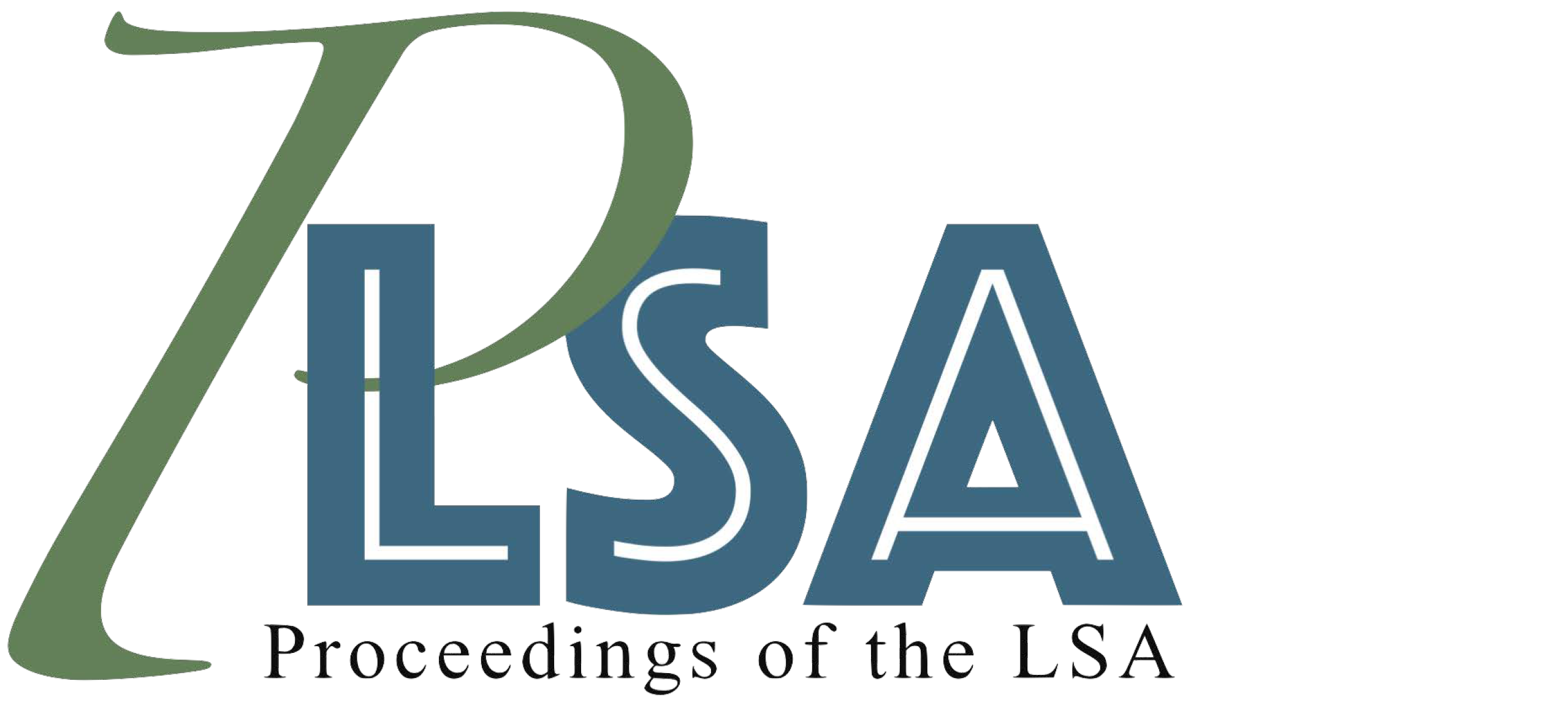A dynamic neural field model of asymmetric interference effects in code-switching
DOI:
https://doi.org/10.3765/plsa.v10i1.5909Keywords:
phonetics, bilingualism, code-switching, Dynamic Field TheoryAbstract
During instances of code-switching, bilingual speakers rapidly transition between languages. Following a transition from one language to the other, a code-switched word can exhibit phonetic differences from the same word produced in a single-
language context. Observation of such ‘interference’ effects depends on language dominance. Interference effects are reported when a speaker switches from their non-dominant language into their dominant language, as shown, for example, in measurements of voice onset time (VOT) from Spanish-English bilinguals. We propose a neurocognitive model of such effects using Dynamic Field Theory (DFT). Interference arises from the interaction of separate language inputs into a single VOT planning field. Following principles from the inverse frequency effect, the amplitudes of the two language inputs are modulated by the frequency of language use, deriving the asymmetry. A key assumption underlying this result is that bilinguals’ speech representations interact in a shared phonetic space.
Downloads
Published
Issue
Section
License
Copyright (c) 2025 Alessandra Pintado-Urbanc

This work is licensed under a Creative Commons Attribution 4.0 International License.
Published by the LSA with permission of the author(s) under a CC BY 4.0 license.
